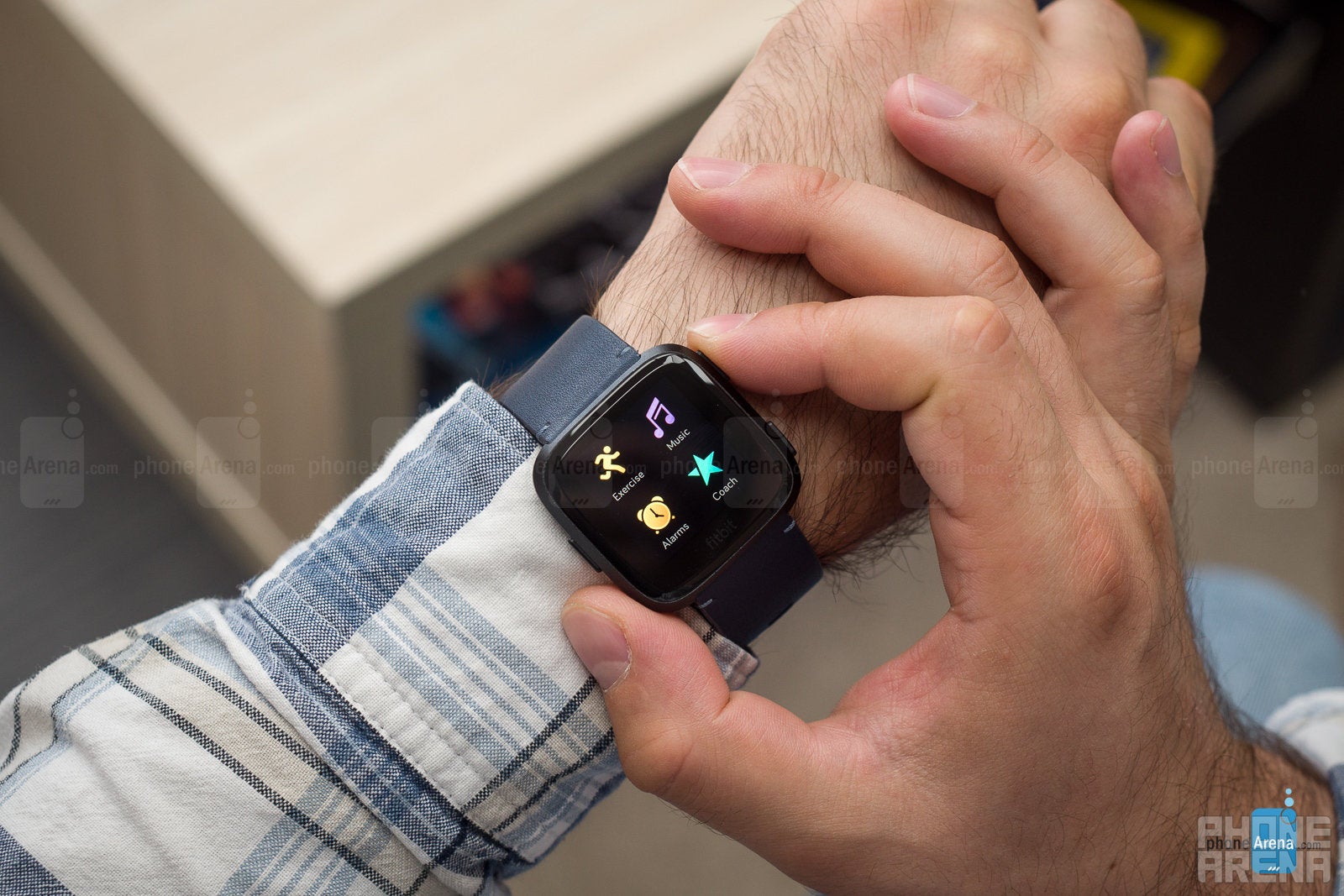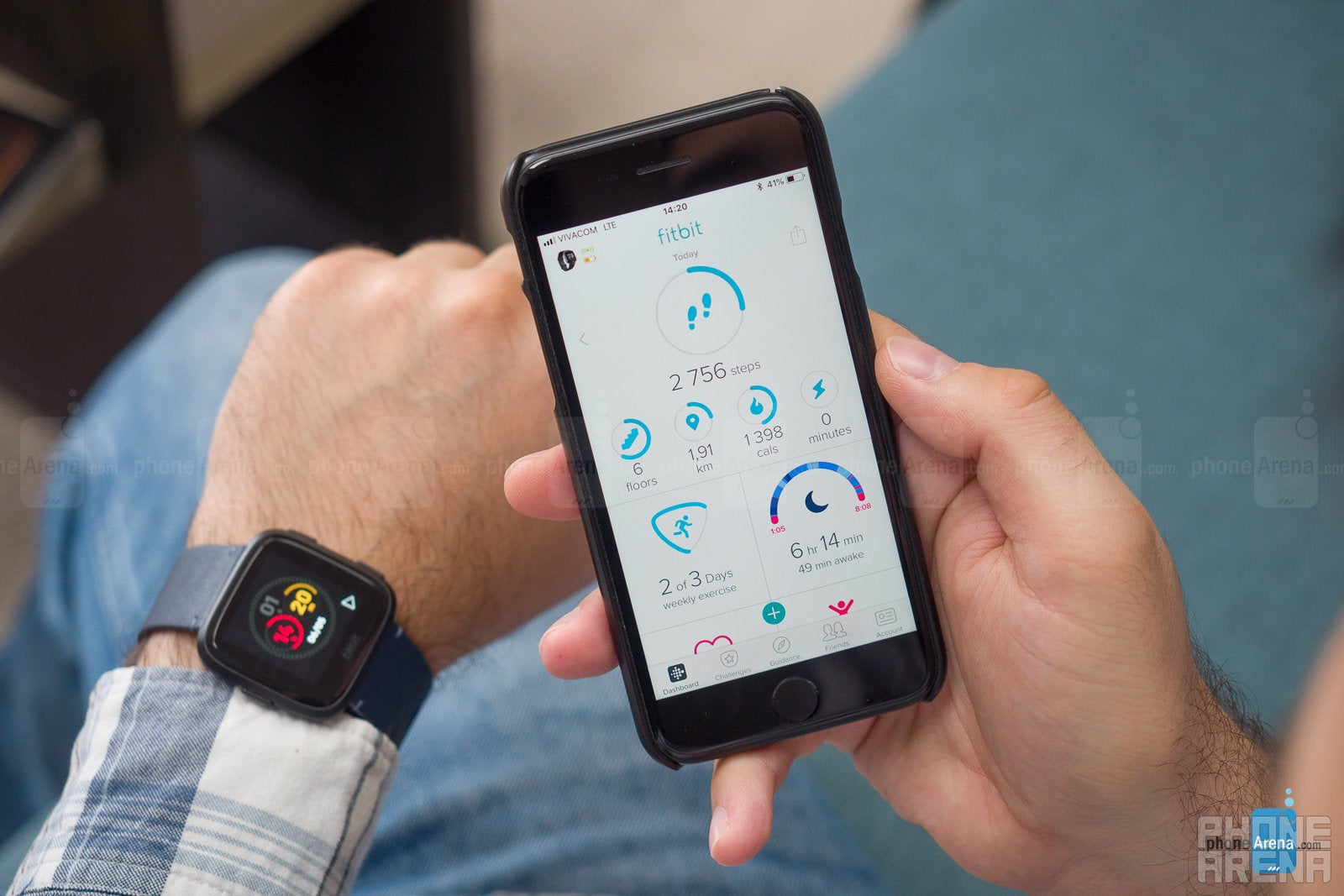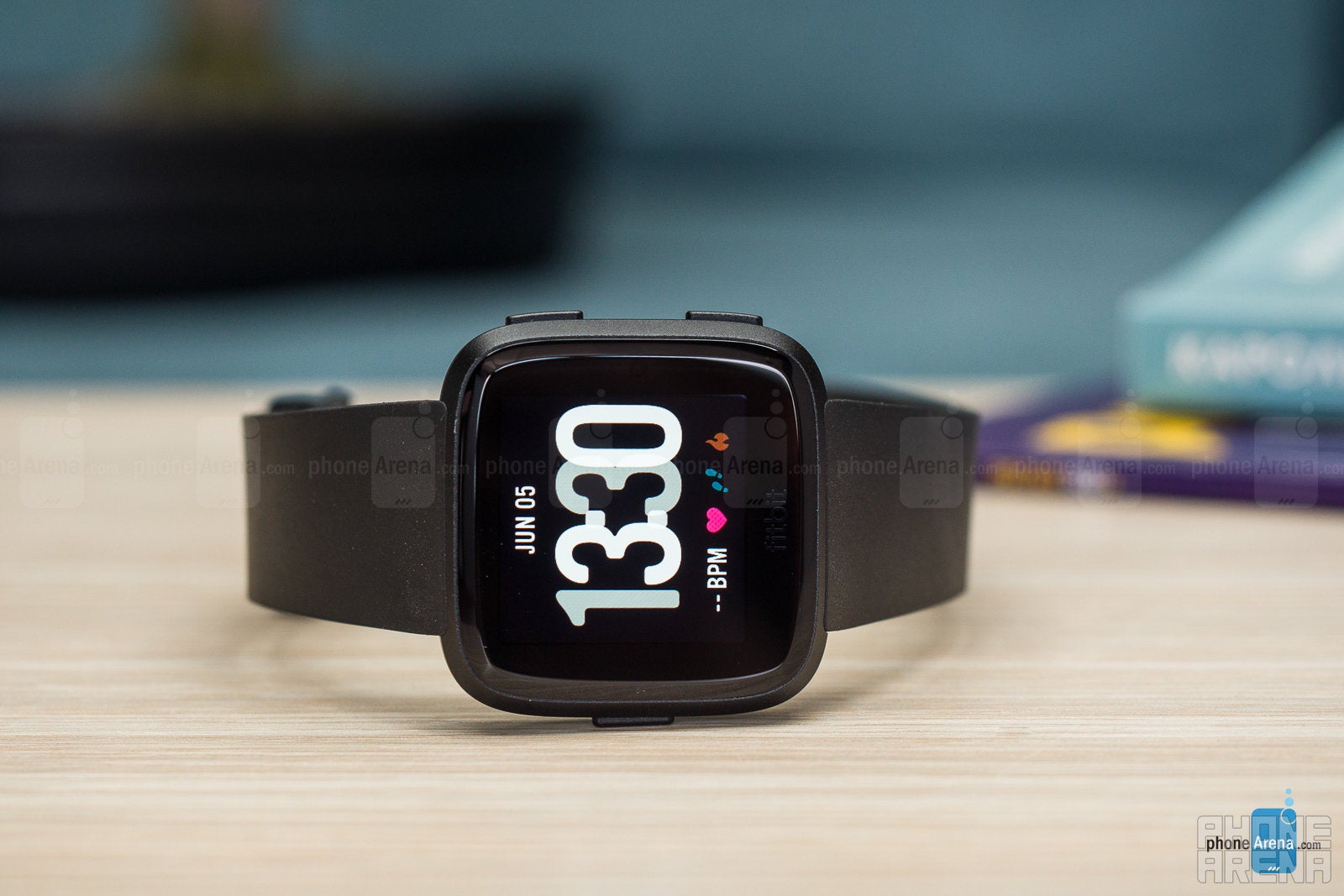Fitbit Versa smartwatch Review

For several years now, Fitbit has been a name synonymous with activity trackers. The Fitbit Versa, however, is much more than a wearable gizmo that counts your steps. It is a full-fledged smartwatch and a capable fitness companion – one that you can safely swim with, one that stores music for offline listening, one that lasts for days between charges. And all of that comes at a very reasonable price of $200. But is getting one really worth it? I spent a couple of weeks wearing the Fitbit Versa to find out.
In the box:
- Fitbit Versa
- Small and large bands
- Charging dock
- papers
Design and comfort

Display and controls

As the case is with many other smartwatches, the touchscreen may misbehave if used with wet or sweaty fingers. Thankfully, that's not much of a problem on the Versa since the three physical buttons allow a sufficient level of interaction while exercising.
Software and functionality

But despite its limitations, the Versa can do some neat tricks. It can store music on its built-in memory for offline use and playback over Bluetooth. It supports Fitbit Pay mobile payments as well, as long as you have the special edition of the watch.
I'm not sure what processor powers the Versa, but I can't imagine it being very powerful. The interface often gets choppy and laggy – not to the point of being annoying, but occasional delays are definitely noticeable.
Notifications from your iPhone or Android smartphone can be delivered to your Versa, and the strong vibration motor ensures that you can't miss them. Filtering certain notifications while letting others through is also an option. However, you can't respond to an incoming message in any way.
Sports and activity tracking
Above all, the Fitbit Versa is a fitness assistant and activity tracker – and a pretty good one at that. It has a user-friendly approach to presenting data and helps you make sense of it all through tips and comparisons with how a typical human being of your age and gender performs. The Versa logs your heart rate 24/7, keeps track of the steps you make and the floors you climb, and nudges you to stand up for a quick stretch in case you've been sitting for too long. However, since the watch lacks its own GPS, it can only track you precisely if it is connected to a phone.
Activity presets include anything from running, cycling, and swimming to tennis, yoga, and martial arts. Longer walks that I've had around town are silently and automatically entered as exercises in my log. Sports like soccer or basketball aren't present, however, so you have to use a general preset called "exercise" for those. Once you're done sweating, the exercise log gives you typical information, such as an estimate of how many Calories you've burned and a breakdown of which heart rate zones you were in.
Sleep tracking on the Fitbit Versa works flawlessly: just go to bed with it and let it do the logging automatically. In the morning, it can be set to wake you up with a gentle vibration.
Alas, Fitbit's software is not without its issues. During my testing of the Versa paired to an iPhone, I've had several instances of the companion app on my phone becoming unresponsive or becoming stuck at a loading screen. I've also had troubles sending watch faces to the Versa – an issue that a restart of the watch eventually fixed.
Music and multimedia

Personally, I used the Fitbit Versa with Deezer during my testing, as I got a free, 3-month trial after registering. To download music onto the watch, I needed to use the Fitbit companion app on my phone. There I selected a Deezer playlist that I liked, which added it to the download queue. The Versa uses Wi-Fi to download tracks directly, but it does that only if it is placed on its charging dock.
Battery life
Speaking of charging, the Fitbit Versa easily lasts multiple days between charges, which anyone coming from an Apple Watch or a Wear OS device would find awesome. On auto brightness and with notifications enabled, I was getting four full days of use out of it. But as expected, music streaming and leaving the screen on during exercises shortens the Versa's battery life significantly.
Conclusion

At the end of the day, the Fitbit Versa is an accessory I would totally recommend checking out. For $200 you're getting a solid fitness companion that also covers most of the functionality one would expect out of a modern smartwatch.









Things that are NOT allowed: